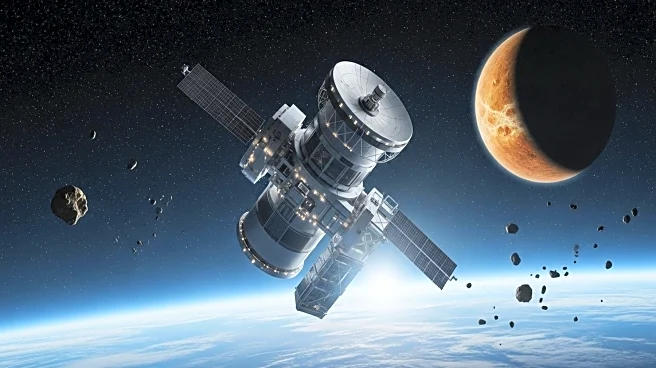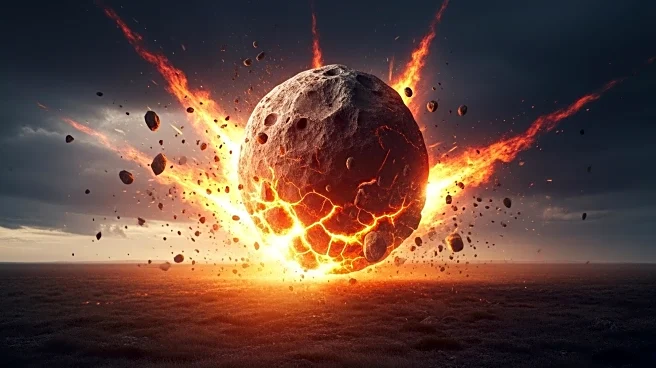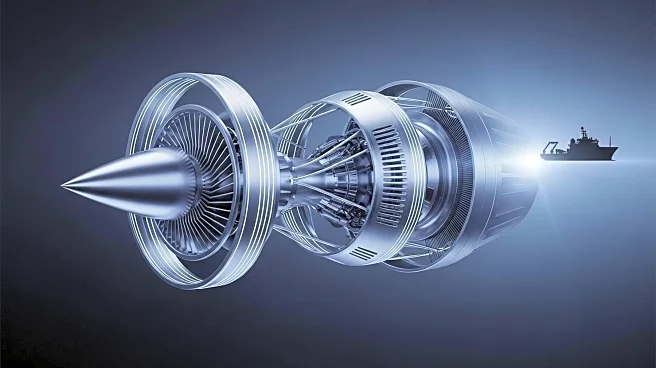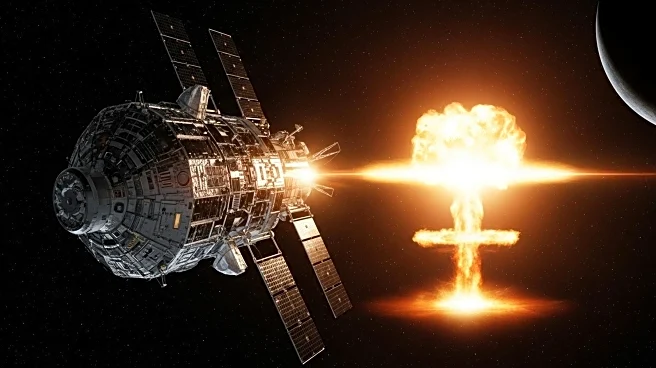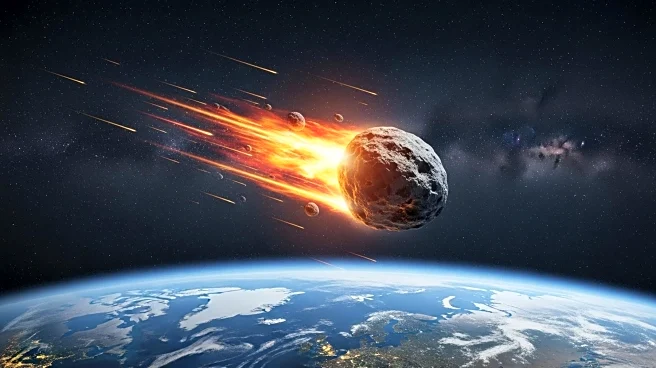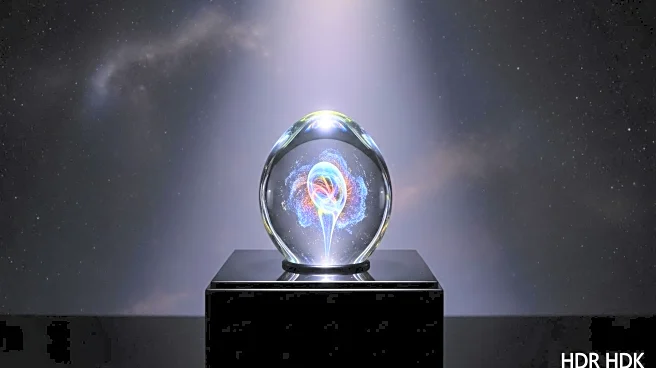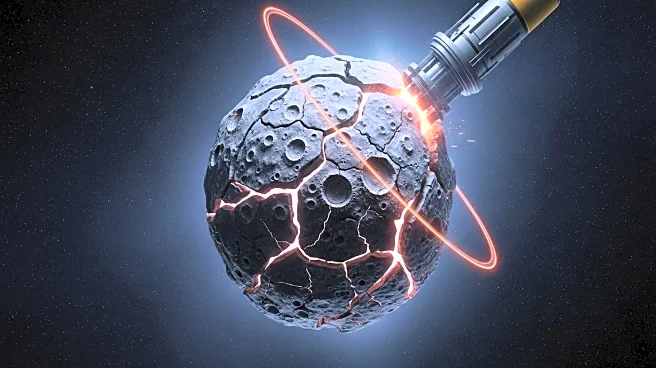What is the story about?
What's Happening?
Researchers have confirmed that the Silverpit Crater, located in the North Sea, was formed by an asteroid impact over 40 million years ago. The crater, discovered in 2002, is situated about 80 miles off the Yorkshire coast and measures 1.8 miles wide, lying 766 yards below the seafloor. Initially, its origins were debated, with theories suggesting it could have been caused by shifting underground salt deposits or volcanic activity. However, a team led by Uisdean Nicholson from Heriot-Watt University used modern 3D seismic imaging and drill cuttings from a 1980s oil well to provide definitive evidence of its cosmic impact origin. The seismic data revealed impact features such as a central uplift, shattered rock zones, and secondary craters, confirming the asteroid strike.
Why It's Important?
The confirmation of the Silverpit Crater's origins as an asteroid impact is significant for understanding Earth's geological history and the potential effects of future asteroid collisions. Impact craters are rare on Earth due to erosion and tectonic activity, making preserved sites like Silverpit valuable for scientific study. This discovery adds to the limited number of confirmed impact sites worldwide, providing insights into the dynamics of asteroid impacts and their role in shaping the planet. The findings could help predict the consequences of similar events in the future, contributing to planetary defense strategies and geological research.
What's Next?
The research team plans to continue studying the Silverpit Crater to gather more information on the impact event and its aftermath. The crater's preservation offers a unique opportunity to explore the chemical reactions and geological changes that occurred immediately after the strike. Further analysis may reveal more about the asteroid's trajectory and the environmental effects of the impact, potentially informing future studies on planetary defense and impact mitigation strategies.
Beyond the Headlines
The Silverpit Crater's confirmation as an asteroid impact site highlights the importance of revisiting geological structures with new technology and data. The use of modern seismic imaging and drill cuttings exemplifies how advancements in scientific methods can resolve longstanding debates and enhance our understanding of Earth's history. This discovery also underscores the need for continued exploration and monitoring of potential impact sites, both on land and beneath the oceans, to better prepare for future cosmic events.
AI Generated Content
Do you find this article useful?


